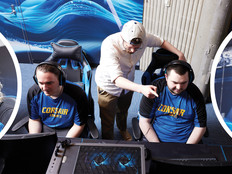Limiting Device Options May Help Colleges Address Digital Equity
Increasingly, institutions are delegating device procurement or consulting to third-party partners so they can focus on the student experience. Often, that requires improving the software stack, and that’s where many institutions would rather focus their energy. At the same time, the move to remote education has led many institutions to realize they need to take ownership of devices so they can guarantee a minimum level of experience for students.
Rather than telling students to bring any device they want to class, colleges are invested in ensuring the devices students have meet minimum specs. A desire to address digital equity also informs this approach, ensuring that one student’s experience isn’t vastly superior to another’s simply because he or she has a more expensive device.
For many institutions, the best approach is one of structured choice. This reflects the common wisdom that people want choice, but not too much. Often, they want a handful of choices mapped to their user personas, which may reflect “good, better, best” or criteria related to a specific field of study. (Devices for graduate-level engineering students, for instance, will differ from those for undergraduate English majors.)
Our customers often want help narrowing down the choices, and as they focus on student experience, structured choice also gives colleges more control and security over what they deliver.
MORE FROM EDTECH: Meet our favorite higher education IT influencers.
Minimize Device Delays With Supply Chain Insights
The second part of the access equation — and the one that has challenged so many colleges in 2020 — is the ability to physically get the devices. When supply chain delays make that impossible, the purchasing power of a company like CDW becomes a huge asset. Because we place significant orders and work directly with all major manufacturers, we have a line of sight into the supply chain all the way to the component level. Our procurement team tracks our global supply chain and communicates regularly with manufacturers to understand early any component-level issues that might affect our customers.
That depth of visibility enables us to make decisions in ways that would be impossible for any single institution to replicate. That’s proved to be valuable as colleges have sought to roll out new devices to support remote work and learning. For one customer, we cross-referenced our hardware recommendations with timelines on when each would be available throughout the planning phase of a major project. This type of insight not only helps colleges make more informed decisions but it also allows them to pivot — a skill that has become supremely valuable this year.
On many campuses, technology teams need to now be focused on solving trickier, software-based problems that make up a virtual or hybrid experience: learning management systems, collaboration, single sign-on, digital rights management, app virtualization and the like. In 2021, hardware and logistics should be “set it and forget it” — and with the right partner, it can be.
This article is part of EdTech: Focus on Higher Education’s UniversITy blog series.












